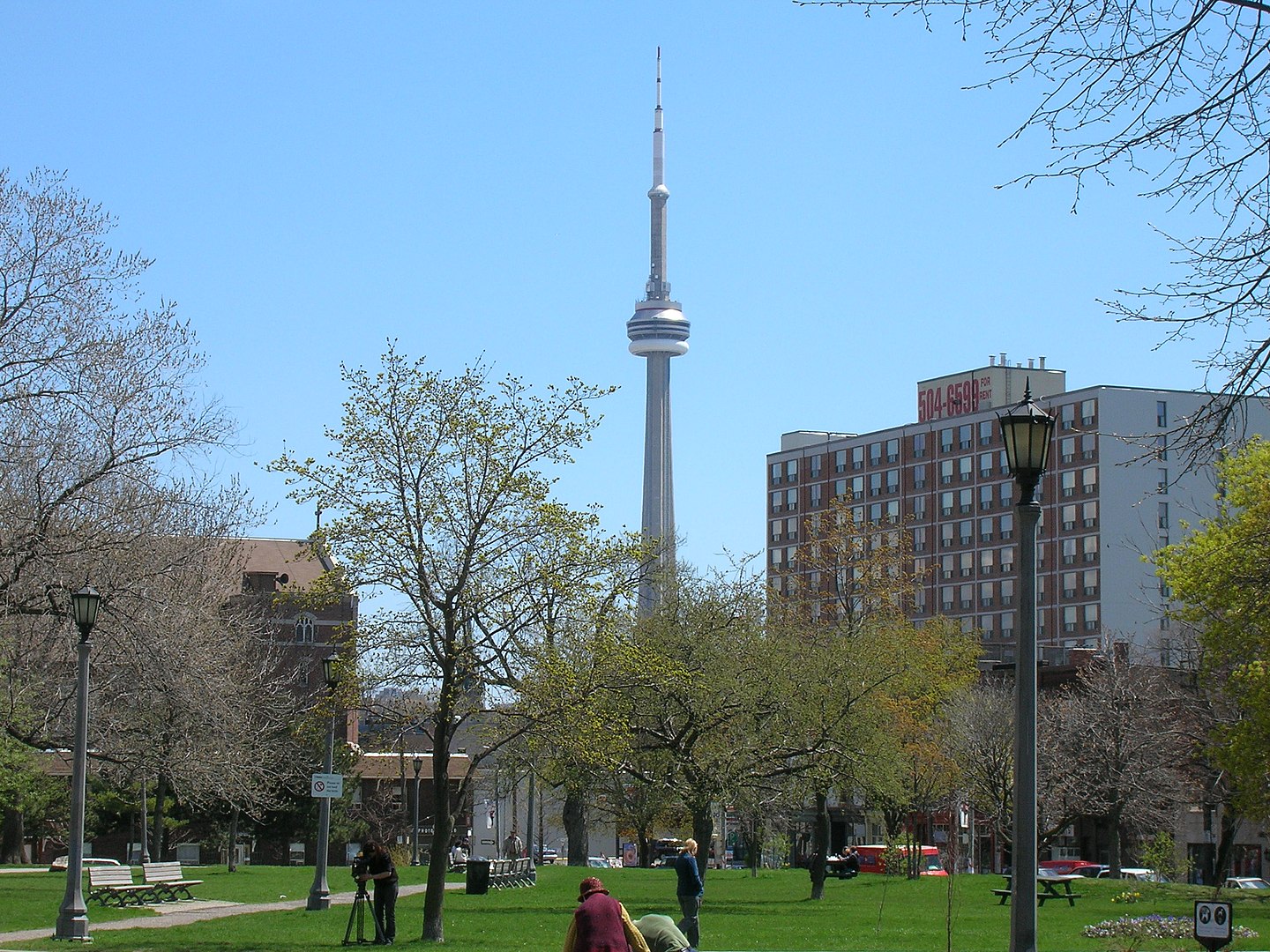
TORONTO — When it came time for Celine Wadhera to celebrate her birthday this year, she and her friends opted to spend an evening at a city park rather than going out for a pricey dinner or setting up a house party.
On a Friday in early August, the 28-year-old and a group of roughly a dozen friends carved out a spot in Toronto’s ever-packed Trinity Bellwoods Park to arrange a variety of towels, sheets and tapestries into a makeshift picnic blanket.
The group stayed there chatting for several hours before eventually migrating to a bar at 11 p.m., long after the sun had set.
The park itself is beautiful. An ornate gate stands at its southern edge along Toronto’s busy Queen Street West, a stone and wrought iron vestige of the original Trinity College building that was built 15 years before Confederation.
The neo-gothic structure, which was demolished in the early 1950s, has been replaced by a park that takes up just over a tenth of a square kilometre. It boasts a baseball diamond, tennis and volleyball courts, an off-leash dog area, two playgrounds and a wading pool.
But the amenities weren’t what drew Wadhera.
“It offers people a chance to be in nature and breathe fresh air, rather than pollution-city-concrete-jungle air all the time, while still being close enough to hit up your local cafe or butcher shop on the way over,” she said.
Toronto’s parks have become a social destination among millennials, drawing groups of friends who might otherwise meet for dinner or drinks to catch up.
“You don’t have to pay anything to be here,” Wadhera noted. “It’s kind of egalitarian, which I’m really into.”
Her group was one of dozens that occupied the lawns, picnic tables and benches of Trinity Bellwoods, thumbing through books before sunset, or gathering near the off-leash area to watch the dogs play.
In some favourable spots — those in the shade or overlooking the “dog bowl” — separate groups were crowded less than a metre apart.
Though Toronto has an average of 28 square metres of parkland per person, most of that is in the outer suburbs: Etobicoke, North York and Scarborough — which has more than 40 square metres of park per person. There’s roughly 21 square metres of parkland per person who live more centrally, according to city statistics.
Factor in visitors to the city who largely congregate in the transit-accessible downtown area and the popularity of Trinity Bellwoods and its ilk is more easily understood, said Raymond Thomson, policy and project advisor for Toronto’s Department of Parks, Forestry and Recreation.
“You have a lot of people interested in checking out scarce parkland areas in the city,” he said.
And while the overwhelming popularity of Trinity Bellwoods has become something of a punchline in Toronto, there are numerous other downtown parks where it’s easier to find a spot to plant your picnic blanket.
The leafy Grange Park, nestled behind the Art Gallery of Ontario, is also easily accessed by transit: the Dundas and Queen streetcars both stop just a few minutes away.
Visitors can look up at OCAD U’s famous black-and-white checkered Sharp Centre — a tabletop building that stands high above the school’s main campus on a dozen multi-coloured stilts — while lounging on one of the park’s benches or perching on the massive bronze sculpture “Large Two Forms.”
Grange Park, like Trinity Bellwoods, has both a playground for kids and an off-leash area for dogs.
And if the weather becomes unfavourable, visitors can easily duck into the AGO, whose canoe-inspired facade is itself an architectural draw.
Closer to the downtown transit hub Union Station, Berczy Park is also worth a visit, Thomson said.
“It’s more European in style than our other more traditional parks,” he said, noting that it’s not the place for those in want of open green spaces, a baseball field or a playground.
Berczy is more of a town square than a suburban-style park. Located squarely in Toronto’s old town, it’s flanked on one side by the wide end of the city’s flatiron building and paved with a granite mosaic.
But the park’s centrepiece is its fountain. Twenty-seven dog statues — and one of a cat — are scattered around the fountain, each with a jet of water shooting out of its mouth.
“You can’t help but notice, people there have a smile on their face,” Thomson said. “There’s something about it that people really enjoy, they seem to have fun with.”